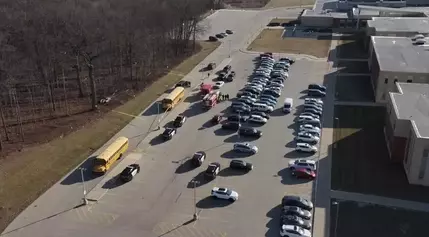Unveiling Oregon's Fiscal Windfall: A Decade of Strategic Allocation
Amidst the legislative session of 2025, Oregon stands at a pivotal juncture where financial surpluses offer unprecedented opportunities for transformative policy decisions. The governor and lawmakers now face the critical task of determining how best to allocate these resources for maximum societal impact.
Unlocking Potential: Crafting a Future Through Strategic Fiscal Planning
The Significance of Decadal Revenue Surges
In the intricate dance of state governance, few moments are as crucial as when unexpected financial windfalls grace the coffers. Oregon, like many states, experiences periodic influxes of revenue that significantly surpass the costs of maintaining current services. This phenomenon, occurring roughly once per decade, brings with it an immense responsibility. Lawmakers and the governor must not only ensure the continuity of essential services but also identify innovative ways to harness this surplus for long-term benefits.The implications of such a financial boon are profound. It offers a rare opportunity to address chronic issues that have long plagued the state—whether in education, healthcare, infrastructure, or social welfare. These moments are not just about balancing budgets; they are about shaping the future. With careful planning, Oregon can leverage this excess revenue to implement policies that will resonate positively for years to come. The challenge lies in making informed, strategic choices that align with the evolving needs of its citizens.Identifying Priorities Amidst Abundance
As the legislature convenes for the extended session in 2025, the focus shifts to identifying priorities within this newfound wealth. The process is complex, requiring a delicate balance between immediate needs and long-term investments. One key area of emphasis could be education, where additional funding can bolster school programs, reduce class sizes, and enhance teacher training. Investing in human capital today ensures a more productive and resilient workforce tomorrow.Healthcare is another sector ripe for investment. Expanding access to mental health services, improving rural healthcare infrastructure, and supporting preventive care initiatives can lead to healthier communities and reduced long-term medical costs. Infrastructure projects, too, deserve attention. Modernizing transportation networks, upgrading public utilities, and enhancing disaster preparedness systems can create jobs while fortifying the state against future challenges.Navigating Fiscal Responsibility and Innovation
While the temptation to allocate funds broadly may be strong, fiscal responsibility demands a measured approach. Lawmakers must resist the urge to spread resources too thinly and instead target areas with the highest potential return on investment. Transparent budgeting processes, coupled with rigorous oversight, can help build public trust and ensure accountability. Innovative financing mechanisms, such as public-private partnerships, can amplify the impact of available funds without straining the state’s financial health.Moreover, engaging stakeholders from various sectors—from educators and healthcare providers to business leaders and community advocates—is vital. Their insights can provide valuable perspectives on where investments will yield the greatest dividends. By fostering collaboration and open dialogue, Oregon can craft policies that reflect a broad consensus and address the diverse needs of its population.Forging a Path Forward
Ultimately, the allocation of this decadal surplus represents a unique chance to forge a path forward that prioritizes both stability and progress. By focusing on areas with the most significant potential for positive change, Oregon can set itself apart as a leader in innovative governance. The coming months will be critical, as decisions made during the 2025 legislative session will shape the state’s trajectory for years to come.This period of fiscal abundance calls for visionary leadership and thoughtful deliberation. As lawmakers deliberate on how best to allocate these resources, they must remain cognizant of the broader implications their choices will have. The goal should be to create a legacy of responsible stewardship and sustainable growth, ensuring that Oregon thrives in the face of future uncertainties.



















